News 2/1/12
![]() McKesson reports Q3 numbers: revenue up 9% to $31 billion, EPS $1.20 vs. $0.60, beating estimates. The company announced that it will buy back an additional $650 million worth of its stock. Shares rose 4% on Tuesday, making MCK the third-best performing S&P 500 stock of the day. Technology Solutions revenue was up 4% with an operating profit of $69 million, although the company took a $42 million pre-tax charge against the termination of development on Horizon Enterprise Revenue Management and the move to Paragon as its go-forward platform. From the conference call:
McKesson reports Q3 numbers: revenue up 9% to $31 billion, EPS $1.20 vs. $0.60, beating estimates. The company announced that it will buy back an additional $650 million worth of its stock. Shares rose 4% on Tuesday, making MCK the third-best performing S&P 500 stock of the day. Technology Solutions revenue was up 4% with an operating profit of $69 million, although the company took a $42 million pre-tax charge against the termination of development on Horizon Enterprise Revenue Management and the move to Paragon as its go-forward platform. From the conference call:
- The company reiterated that it has no plans to sunset Horizon Clinicals, but also made it clear that customers will probably either choose to move to Paragon at some point or switch vendors.
- McKesson paid $6 million in severance related to the shutdown of HERM.
- The company talked up its payer and transaction businesses (like RelayHealth) in a manner that suggests it likes the steady, predictable revenue they generate compared to the sales-driven revenue swings of the software business.
- The company admitted that “as you know, we’ve had some challenges with the Horizon Clinical implementations.”
- My overall impression is that the company is being fairly open in describing its challenges with HERM and Horizon Clinicals, although in the last couple of quarterly calls they were quite upbeat about both. Publicly traded companies aren’t very good about warning investors of potential bumps in the road.
![]() From Baystatehockey: “Re: Mark Gorrell, VP/CIO of Baystate Health. Gone and replaced by Heather Nelson as interim CIO.” I think I can safely call this rumor verified based on Mark’s exuberant and obviously recently updated LinkedIn job title, which is darned cool. Here’s his blog with sailing photos and some really interesting thoughts about pursuing something he and his family always wanted to do, even though he says he’s risk-averse and prone to motion sickness.
From Baystatehockey: “Re: Mark Gorrell, VP/CIO of Baystate Health. Gone and replaced by Heather Nelson as interim CIO.” I think I can safely call this rumor verified based on Mark’s exuberant and obviously recently updated LinkedIn job title, which is darned cool. Here’s his blog with sailing photos and some really interesting thoughts about pursuing something he and his family always wanted to do, even though he says he’s risk-averse and prone to motion sickness.
![]() From Duxelles: “Re: IBM. To acquire [publicly traded vendor name omitted] – any truth to this?” I haven’t heard anything and it doesn’t seem likely. Then again, neither did the rumor at HIMSS time awhile back about this company that turned out to be true, which made me glad that I at least mentioned so I didn’t look clueless. It is likely that quite a few big announcements of various flavors are being embargoed by several companies until the HIMSS conference, so I’m sure we’ll have lots to talk about in three weeks.
From Duxelles: “Re: IBM. To acquire [publicly traded vendor name omitted] – any truth to this?” I haven’t heard anything and it doesn’t seem likely. Then again, neither did the rumor at HIMSS time awhile back about this company that turned out to be true, which made me glad that I at least mentioned so I didn’t look clueless. It is likely that quite a few big announcements of various flavors are being embargoed by several companies until the HIMSS conference, so I’m sure we’ll have lots to talk about in three weeks.
![]() From Amish Boy: “Re: Epic’s support teams. At my previous hospital, I got to know our application’s assigned support person very well. I’ve worked with Cerner for years and they don’t have the same personal attachment. We used to joke that Cerner’s Immediate Response Center number was busy because the middle school bus hadn’t dropped the IRC employees off at Cerner HQ yet.”
From Amish Boy: “Re: Epic’s support teams. At my previous hospital, I got to know our application’s assigned support person very well. I’ve worked with Cerner for years and they don’t have the same personal attachment. We used to joke that Cerner’s Immediate Response Center number was busy because the middle school bus hadn’t dropped the IRC employees off at Cerner HQ yet.”
From Bill Rieger: “Re: Flagler Hospital, St. Augustine, FL. Kicked off its Meditech to Allscripts SCM transition at a well-attended campus event. The IS department broke out in flash mob just before the CIO spoke about how hard it would be to tear down the walls of poor processes that have been built up over the years. We are engaged and involved and want to be dancing when we go live in June 2013.” Bill is CIO at Flagler Hospital. Nice video.
From The PACS Designer: “Re: FuelBand. A new mobile application from Nike that is worn on the wrist and can track your daily activity with an accelerometer. It tracks calories expended, steps taken, and the time of day, as well as your NikeFuel score viewable on an LED display. Your score is based on an algorithm that assigns points to various movements.”
From BuffaloWings: “Re: Sandlot and Santa Rosa Consulting. To merge?” Santa Rosa already was a partial owner of the HIE technology vendor Sandlot (the other owner is a Texas physician group). I haven’t heard if they are taking that relationship further.
HIStalk Announcements and Requests
![]() Mr. H and I were commiserating last night about our pre-HIMSS overwhelmed-ness. The last few days I have been working on the HIStalk Guide to HIMSS12, which includes an overview of what our sponsors will be featuring this year. We are also including contact information for at least a dozen sponsors who are not exhibiting, but that are available for one-on-one meetings with attendees. Look for the Guide to be published the week before HIMSS. Sponsors, make sure to send your information.
Mr. H and I were commiserating last night about our pre-HIMSS overwhelmed-ness. The last few days I have been working on the HIStalk Guide to HIMSS12, which includes an overview of what our sponsors will be featuring this year. We are also including contact information for at least a dozen sponsors who are not exhibiting, but that are available for one-on-one meetings with attendees. Look for the Guide to be published the week before HIMSS. Sponsors, make sure to send your information.
![]() If you are attending HIMSS, you only have about 20 more days to prep. It’s not too soon to go through your old shoes (including your kids’ old shoes) to bring for our Soles4Souls shoe drive. We will have drop-off boxes on the exhibit floor at the DrFirst booth (5456) and possibly one other location. We’ll also accept donations at HIStalkapalooza for those who received invitations (with a free IngaTini for every pair you donate.)
If you are attending HIMSS, you only have about 20 more days to prep. It’s not too soon to go through your old shoes (including your kids’ old shoes) to bring for our Soles4Souls shoe drive. We will have drop-off boxes on the exhibit floor at the DrFirst booth (5456) and possibly one other location. We’ll also accept donations at HIStalkapalooza for those who received invitations (with a free IngaTini for every pair you donate.)
![]() We like highlighting cool vendor events at HIMSS since readers are always looking for fun stuff to do there. Here’s one: CSI Healthcare IT is offering cocktails and dinner at the Canaletto Ristorante at the Venetian on Wednesday evening (February 22) from 6:30 until 9:30. It’s invitation-only and you can RSVP by e-mail.
We like highlighting cool vendor events at HIMSS since readers are always looking for fun stuff to do there. Here’s one: CSI Healthcare IT is offering cocktails and dinner at the Canaletto Ristorante at the Venetian on Wednesday evening (February 22) from 6:30 until 9:30. It’s invitation-only and you can RSVP by e-mail.
![]() Speaking of HIMSS events, ours is full. We have a lot of friends and loyal readers, and if we had endless space and money, we would happily invite every one of them to the ESD-powered HIStalkpalooza. Since we don’t, we have no choice but to turn down requests, even for invitees who want to bring a guest (I’d estimate that we have close to 1,000 people who want to come that we don’t have room for.) Maybe next time I should also run a secondary event that’s cheaper to produce so that lots and lots of folks could come as a backup event, like renting some big New Orleans field, hiring a band, setting out pallets full of beer and wine, and passing out hot dogs and marshmallows to roast over a bonfire. That’s my kind of networking event.
Speaking of HIMSS events, ours is full. We have a lot of friends and loyal readers, and if we had endless space and money, we would happily invite every one of them to the ESD-powered HIStalkpalooza. Since we don’t, we have no choice but to turn down requests, even for invitees who want to bring a guest (I’d estimate that we have close to 1,000 people who want to come that we don’t have room for.) Maybe next time I should also run a secondary event that’s cheaper to produce so that lots and lots of folks could come as a backup event, like renting some big New Orleans field, hiring a band, setting out pallets full of beer and wine, and passing out hot dogs and marshmallows to roast over a bonfire. That’s my kind of networking event.
![]() Your honey-do list from Inga: (a) search our sponsors in the Resource Center; (b) take five minutes to get your consulting RFI request in front of several companies at once with the RFI Blaster; (c) click on some sponsor ads just to see where you end up; and (d) send us rumors and cool stuff. And while Inga, Dr. Jayne, and I don’t want you to feel like a number, you are, in a good way that we appreciate: one of almost 5 million HIStalk visitors since 2003 and over 110,000 this month; one of 7,861 subscribers to our e-mail updates; one of the 2,165 members of the HIStalk Fan Club that Dann started; or one of our LinkedIn connections or Facebook friends. Unlike HIStalkapalooza, those numbers can scale infinitely, so feel free to increase them. Sometimes we screw up in running an erroneous rumor or being slow in responding to e-mails, but one thing we never do is take readers and sponsors for granted, so thank you for being part of what we do.
Your honey-do list from Inga: (a) search our sponsors in the Resource Center; (b) take five minutes to get your consulting RFI request in front of several companies at once with the RFI Blaster; (c) click on some sponsor ads just to see where you end up; and (d) send us rumors and cool stuff. And while Inga, Dr. Jayne, and I don’t want you to feel like a number, you are, in a good way that we appreciate: one of almost 5 million HIStalk visitors since 2003 and over 110,000 this month; one of 7,861 subscribers to our e-mail updates; one of the 2,165 members of the HIStalk Fan Club that Dann started; or one of our LinkedIn connections or Facebook friends. Unlike HIStalkapalooza, those numbers can scale infinitely, so feel free to increase them. Sometimes we screw up in running an erroneous rumor or being slow in responding to e-mails, but one thing we never do is take readers and sponsors for granted, so thank you for being part of what we do.
![]() On the sponsor-only Job Board: NextGen Training Coordinator, Epic Go-Live Support, Cerner Go-Live Support. On Healthcare IT Jobs: Senior Technical Advisory Consultant, Epic Certified Clinical Analysts, Epic Hospital Billing.
On the sponsor-only Job Board: NextGen Training Coordinator, Epic Go-Live Support, Cerner Go-Live Support. On Healthcare IT Jobs: Senior Technical Advisory Consultant, Epic Certified Clinical Analysts, Epic Hospital Billing.
![]() Welcome to new HIStalk Platinum Sponsor Lifepoint Informatics, which offers vendor-neutral data integration solutions, with an emphasis on lab outreach. Its EMRHub provides fast, easy LIS-to-EMR connectivity (Web-based middleware with only one LIS interface required) for hospitals and any type of labs interested in strengthening physician relationships, developing new revenue streams, and earning Meaningful Use incentives. Its LPI CPOE ensures clean, valid CPOE lab/rad orders that meet medical necessity and ABN requirements. Its LPI Web Provider Portal is a cost-effective way to deliver a complete patient picture to providers, providing a unified clinical inbox, flowcharts, and reports using information from systems such as clinical labs, pathology, micro, AP, cyto, and cardiology via any Web browser, helping hospitals, labs, and groups meet the IT needs of their clients. The company just landed a big deal in providing Sparrow Laboratories, one of the country’s top outreach labs with 15 labs in Michigan, with solutions to extend its reach to current and potential customers. Other customers include Indiana University Health, Continuum Health Partners, Memorial Hermann, and New York-Presbyterian. Drop by Booth 153 at HIMSS for two reasons: (a) to see their tools in action, and (b) to get one step closer to bringing home an iPad 2 in the soon-to-be-announced HIStalk Booth Crawl, of which the company is a sponsor. Thanks to Lifepoint Informatics for supporting HIStalk.
Welcome to new HIStalk Platinum Sponsor Lifepoint Informatics, which offers vendor-neutral data integration solutions, with an emphasis on lab outreach. Its EMRHub provides fast, easy LIS-to-EMR connectivity (Web-based middleware with only one LIS interface required) for hospitals and any type of labs interested in strengthening physician relationships, developing new revenue streams, and earning Meaningful Use incentives. Its LPI CPOE ensures clean, valid CPOE lab/rad orders that meet medical necessity and ABN requirements. Its LPI Web Provider Portal is a cost-effective way to deliver a complete patient picture to providers, providing a unified clinical inbox, flowcharts, and reports using information from systems such as clinical labs, pathology, micro, AP, cyto, and cardiology via any Web browser, helping hospitals, labs, and groups meet the IT needs of their clients. The company just landed a big deal in providing Sparrow Laboratories, one of the country’s top outreach labs with 15 labs in Michigan, with solutions to extend its reach to current and potential customers. Other customers include Indiana University Health, Continuum Health Partners, Memorial Hermann, and New York-Presbyterian. Drop by Booth 153 at HIMSS for two reasons: (a) to see their tools in action, and (b) to get one step closer to bringing home an iPad 2 in the soon-to-be-announced HIStalk Booth Crawl, of which the company is a sponsor. Thanks to Lifepoint Informatics for supporting HIStalk.
Acquisitions, Funding, Business, and Stock
IT professional services firm NTT DATA Americas announces that its Keane, Intelligroup, MISI Company, The Revere Group, Vertex, and Agile Net organizations will start doing business under the NTT DATA brand.
ADP acquires small-practice revenue cycle management company PhyLogic Healthcare of Springfield, MA and will offer its outsourced billing services to its ADP AdvancedMD customers.
Greenway Medical goes public Thursday, with its $80 million IPO providing a market cap of $330 million.
Sales
BCBS of Kansas City selects InterComponentWare to implement a master patient index to address demands for aggregated patient data in the HIE environment.
Shriners Hospitals for Children selects the MedeAnalytics Clinical Performance Manager solution.
Oswego Hospital (NY) contracts for Wolters Kluwer Health’s ProVation Order Sets.
Acadia Healthcare (TN) selects Healthcare Management Systems Inc.’s (HMS) financial applications for its 25+ facilities.
Banner Health contracts with MEDSEEK solution to deploy its patient, physician, consumer, and employee engagement platform.
Riverside Medical Group (VA) licenses Streamline Health’s physician workflow management solution to manage A/R and denials.
People
PwC US hires Andrew Kemmeling, formerly with Phoenix Health Systems, as a partner in its enterprise resource planning and business transformation practice.
Providence Health & Services, Southern California promotes Elizabeth Petrich-Kennedy to chief nursing informatics officer.
Former CSC and First Consulting CMO David Classen joins patient safety solutions vendor Pascal Metrics as CMIO. Former TheraDoc CEO Stanley Pestotnik also joins the company as a senior advisor.
PerfectServe hires former Krames Healthcare sales executive Michelle Piel as a VP of sales.
iSirona promotes Mary Carr, RN, BSN, CPN to Chief Nursing Officer.
Quantros promotes Gerard Livaudais MD, MPH to chief medical officer and SVP of content and product management.
Alerting vendor Extension hires Tom Berger RN as chief nursing officer. He was previously with Vocera.
Announcements and Implementations
Resource Anesthesia deploys the Shareable Ink Anesthesia Suite across multiple states and facilities.
KishHealth System (IL) implements the Pharmacy Xpert clinical surveillance and intervention solution from Thomson Reuters.
CynergisTek releases Surveyor for Business Associates, a risk management solution for demonstrating HIPAA/HITECH compliance.
The US Patent and Trademark office awards Medicity a patent for locating, indexing, matching, and sharing patient records among healthcare organizations. It’s the company’s third patent issued in two years.
Macadamian will launch its Usability Maturity self-assessment checklist at the HIMSS conference, building on previous work that found that easier-to-use EHRs increase productivity, decrease errors, and provide cognitive support to users.
DrFirst launches its EHR Advisor online tool to help physicians find a solution from those offered by the company’s partners.
HealthStream and Laerdal Medical, through their SimVentures collaboration, offer SimManager, a SaaS-based system for managing simulation-based healthcare training.
Government and Politics
In a Congressional subcommittee hearing, a VA official says its new paperless claims processing system will help reduce the department’s claims backlog and take out months of processing. The current number of pending VA claims is over 854,000, which is 100,000 more than a year ago and 500,000 more than three years ago.
A Congressional Budget Office report predicts that the cost of government healthcare programs will more than double over the next 10 years to $1.8 trillion, or about 7% of the nation’s economy. It predicts that Medicare spending will increase by 90%.
The COO of the West Virginia Health Network is named by a legislative auditor as being one of several retired public employees who are exploiting a loophole that allows them to collect both a pension and paycheck at the same time.
Conservative group Judicial Watch calls on Newt Gingrich to release the full client list of his Center for Health Transformation.
Innovation and Research
Oracle Health Sciences Institute announces its first group of research projects, including a Brigham and Women’s/Harvard study that will use EMR and claims data to analyze treatment alternatives and a University of Maryland project to visualize longitudinal EMR and claims data to detect adverse events.
Other
The Robert H. Smith School of Business at the University of Maryland announces the “Innovate 4 Healthcare Challenge,” a nationwide contest for college students to develop HIT tools to improve patient engagement with healthcare providers. The challenge is supported by ONC and includes $30,000 in prize money.
![]() I was amused to read that people lie more when texting than when communicating by other methods, including video chat. I wonder if that carries over to clinical interactions, since I’ve only had one text conversation with a physician and I think we were both pretty honest. However, I’m now wondering about the text from an old boyfriend who said he couldn’t meet for dinner because he was moving to South America.
I was amused to read that people lie more when texting than when communicating by other methods, including video chat. I wonder if that carries over to clinical interactions, since I’ve only had one text conversation with a physician and I think we were both pretty honest. However, I’m now wondering about the text from an old boyfriend who said he couldn’t meet for dinner because he was moving to South America.
![]() Eric Van De Graaf MD, a cardiologist who wrote an EMR critique on the official blog of Alegent Health awhile back, follows it up with An Open Letter About Electronic Medical Records, in which he is even more critical in a tongue-in-cheek way. It leads off with, “Dear computer programmers and EMR developers. Your product stinks. The whole world of medical communication took a great big nosedive the moment you and your binary code inserted yourself into the business of medicine.” That was just an attention-getter, I suspect. He says the purpose of doctors’ notes (electronic or paper) is not to get paid or to comply with regulations, but to communicate, and EMRs diminish that capability by inserting boilerplate text and other junk needed for non-communication purposes (billing, malpractice avoidance, and government requirements, which is really more of an indictment of today’s medical practice than the tools that support it). He has a big finish:
Eric Van De Graaf MD, a cardiologist who wrote an EMR critique on the official blog of Alegent Health awhile back, follows it up with An Open Letter About Electronic Medical Records, in which he is even more critical in a tongue-in-cheek way. It leads off with, “Dear computer programmers and EMR developers. Your product stinks. The whole world of medical communication took a great big nosedive the moment you and your binary code inserted yourself into the business of medicine.” That was just an attention-getter, I suspect. He says the purpose of doctors’ notes (electronic or paper) is not to get paid or to comply with regulations, but to communicate, and EMRs diminish that capability by inserting boilerplate text and other junk needed for non-communication purposes (billing, malpractice avoidance, and government requirements, which is really more of an indictment of today’s medical practice than the tools that support it). He has a big finish:
Someday there will be a Steve Jobs of the EMR world who will come along and produce a system that listens in on my office visit with the patient, uses voice recognition and AI to produce an extremely accurate summary of the discussion, and schedules all necessary tests and medications based on what I explain to the patient—all without me having to even interact with a computer keyboard. The note will be instantly dispersed to the patient and all other caregivers. The program will suggest any useful therapies that I may have missed and provide educational resources to the patient based on the subjects discussed. And, of course, it’ll hit all the high points needed by the coders and Medicare overlords. When this happens it’ll put every other EMR out of business; because, finally, we’ll have a system that actually helps us rather than hampers us.
![]() A California hospital is fined $100K after a nurse in its long-term care unit replaces a comatose woman’s breathing tube, but forgets to remove the cap, suffocating the 81-year-old woman.
A California hospital is fined $100K after a nurse in its long-term care unit replaces a comatose woman’s breathing tube, but forgets to remove the cap, suffocating the 81-year-old woman.
![]() Six employees of the Food and Drug Administration who tipped off Congress about what they claim was the agency’s corrupt push to approve unsafe medical devices file a complaint against their employer, saying that FDA violated whistleblower protections by intercepting their personal e-mails and installing spyware on their PCs.
Six employees of the Food and Drug Administration who tipped off Congress about what they claim was the agency’s corrupt push to approve unsafe medical devices file a complaint against their employer, saying that FDA violated whistleblower protections by intercepting their personal e-mails and installing spyware on their PCs.
Sponsor Updates
- Kareo announces the opening of its Indianapolis office and its plans to add 50 new sales and customer service positions.
- Practice Fusion hires Jonathan Malek as SVP of technology and John Hluboky as VP of technical operations.
- OptumInsight announces that its HIE and computer-assisted coding solutions achieved the highest industry standards for interoperability at the IHE North American Connectathon.
- T-System launches Care Continuity, a Web-based patient referrals tool.
- The 37-provider Mendelson/Kornblum Orthopedic and Spine Surgeons (MI) selects the SRS EHR.
- Concerro hosts a webinar on disaster preparedness and emergency management.
- Hayes Management Consulting offers an EMR optimization webinar.
- A PatientKeeper survey finds that preparation for the ICD-10 transition is the highest priority of finance professionals in healthcare provider organizations.
- Allscripts facilitates a meeting with Surgeon General Regina Benjamin MD and 20 North Carolina business leaders.
- Altoona Regional Health System (PA) selects Access Intelligent Forms Suite for its three locations.
- Merge Healthcare adds six practices to its Merge OrthoEMR client base.
Contacts
Mr. H, Inga, Dr. Jayne, Dr. Gregg.
More news: HIStalk Practice, HIStalk Mobile.






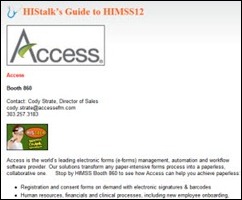







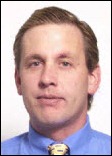
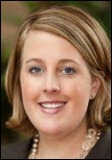
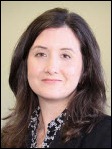



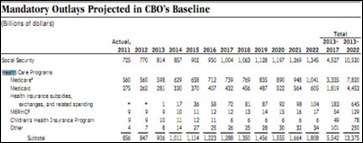
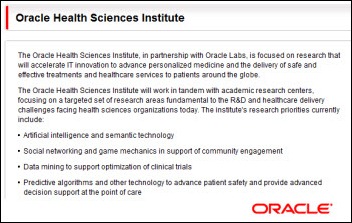


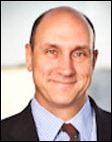
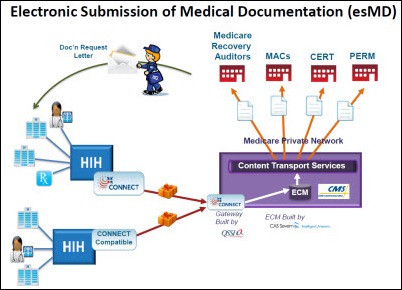
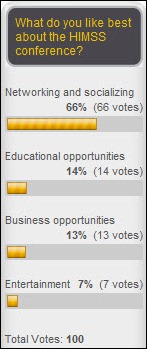
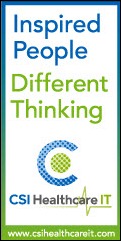
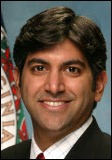
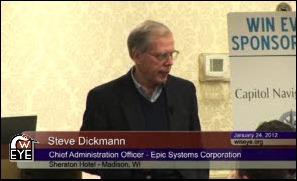

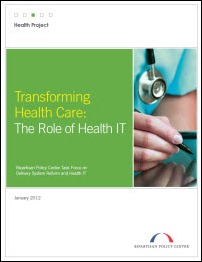
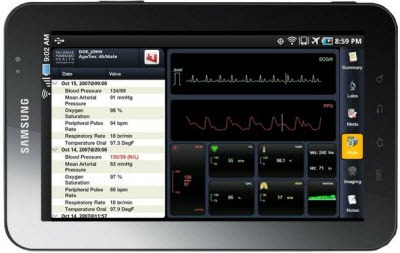


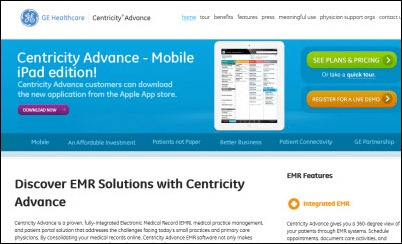
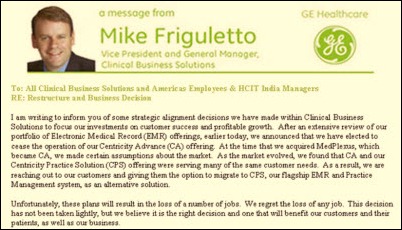



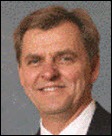


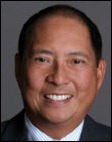
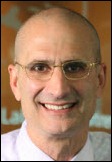
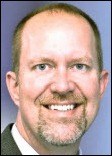
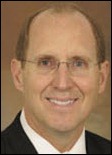
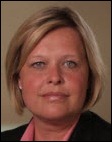

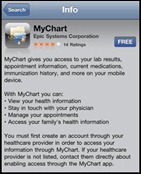

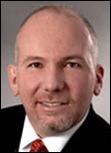

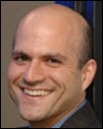

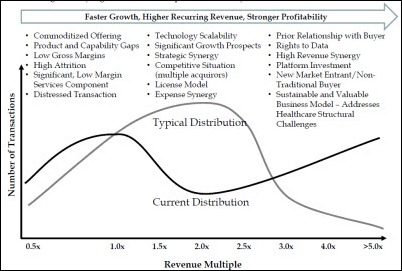

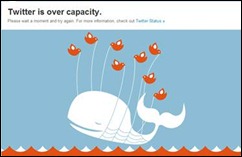






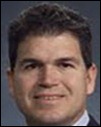
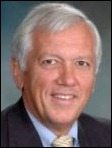
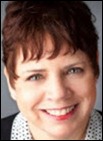

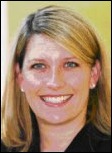
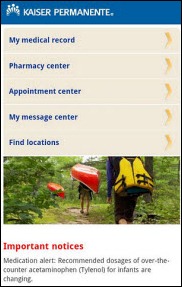
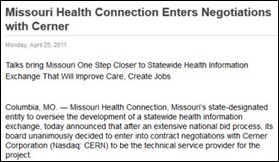


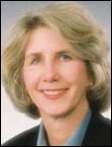

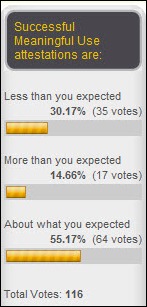


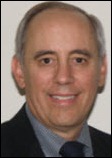
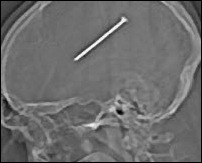




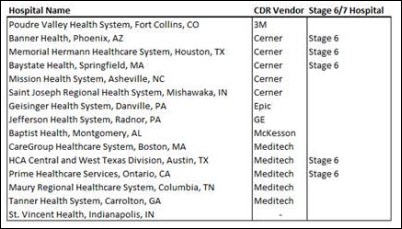






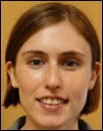
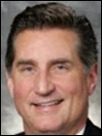
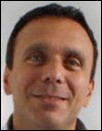
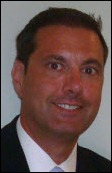
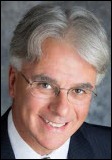



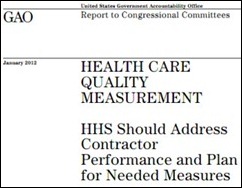





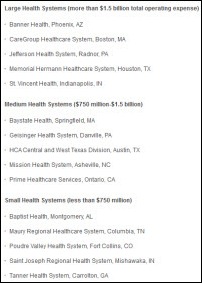
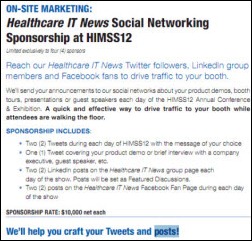
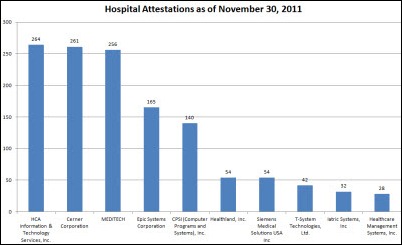
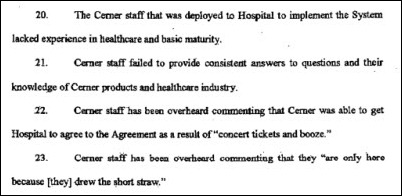


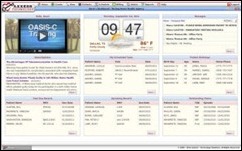



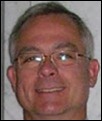
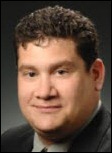
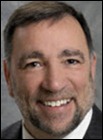
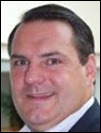


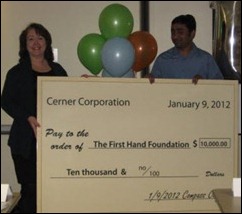
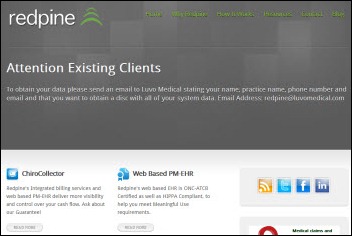

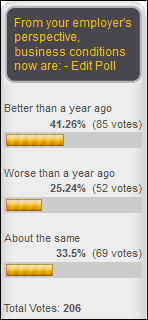







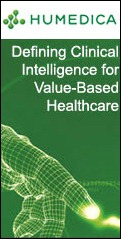



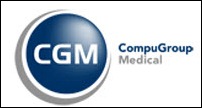





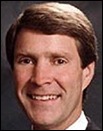
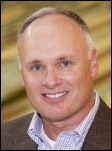
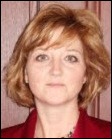
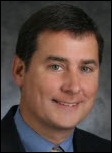
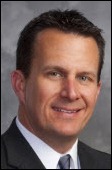

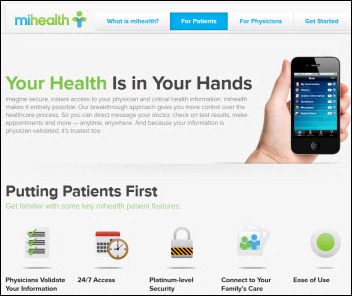


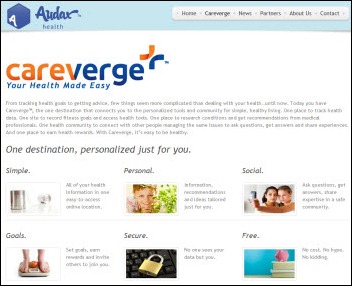









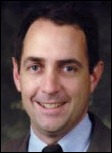
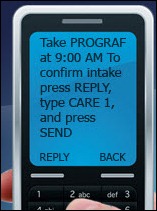
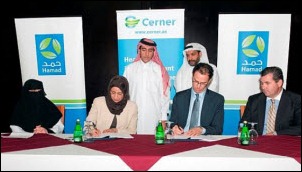
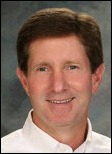





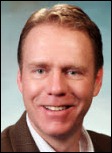

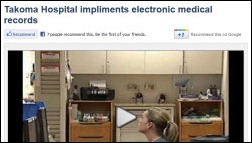


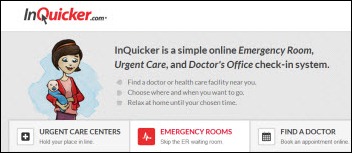


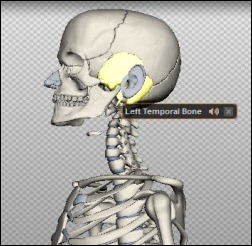

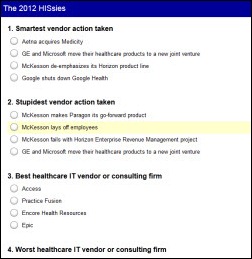
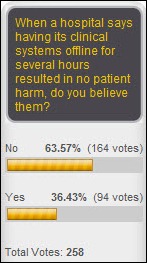

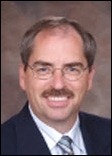

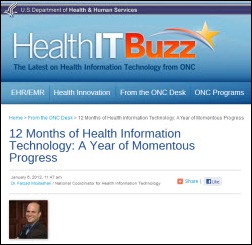






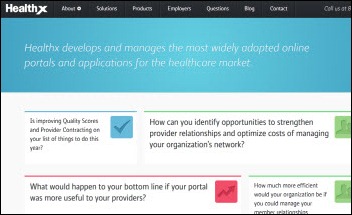




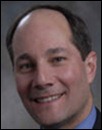

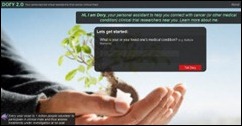






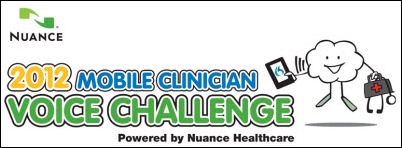
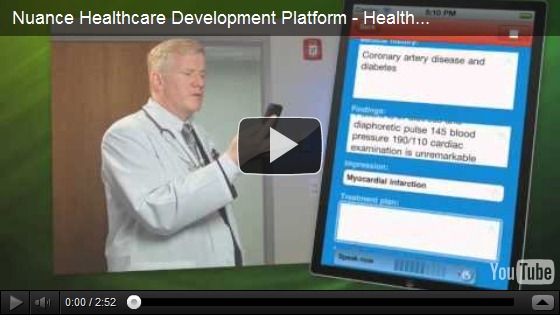
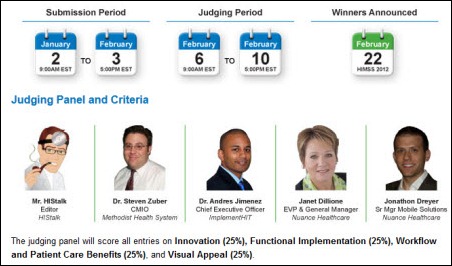
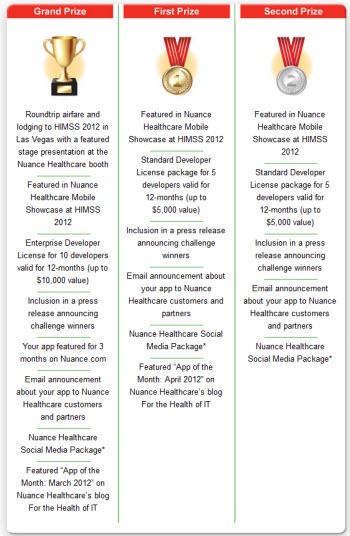



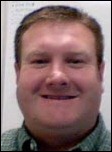



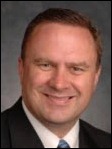

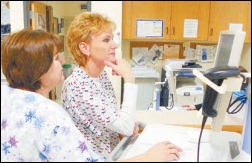

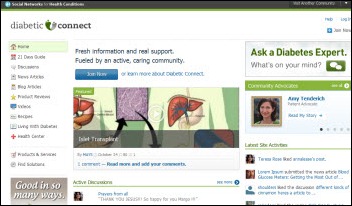








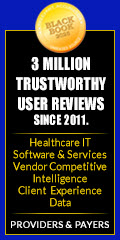


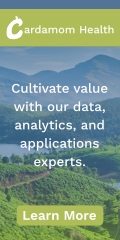














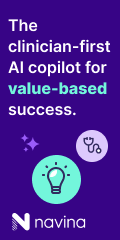










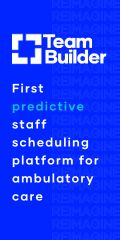






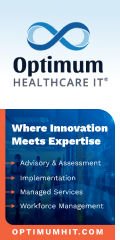

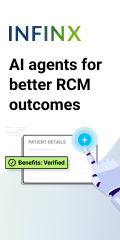














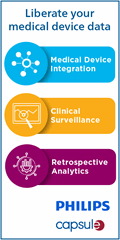
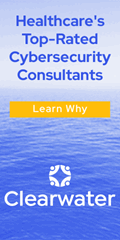




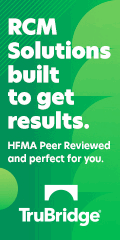



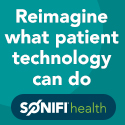
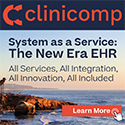
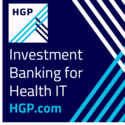







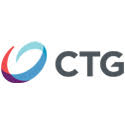

Would have liked to have seen more about Expanse here. Would like to see more about it on this site…